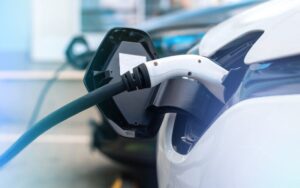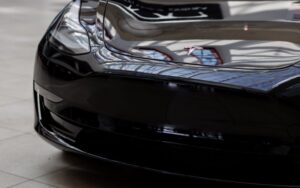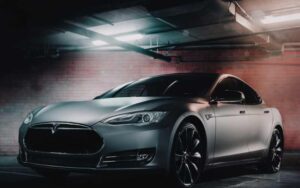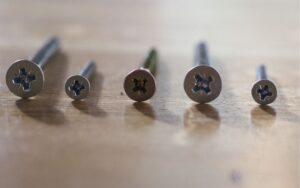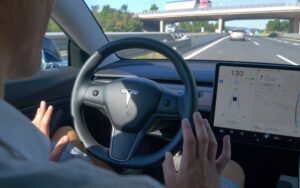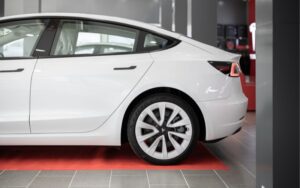Top 3 The Most Common Tesla Repairs!
Last updated on April 18th, 2023 at 11:16 pm
Tesla makes some of the most sophisticated vehicles in the world. However, like others, these cars have issues that might arise anytime.
Some of these problems are trivial and easy to solve, while others require costly repairs.
You need to be aware of these issues to avoid them or be better prepared to handle them.
Memory failure is a common issue in Tesla that often requires repairs. This problem stems from the car’s media control component, which declines easily. Even parts like door handles can break since they lack durability. The glass windows on Teslas are also prone to cracking. Furthermore, Tesla batteries can stop working anytime due to their low capacity.
This article will highlight some of the common issues on Tesla that need repairs. Reading on, you’ll come across some system failures in Tesla vehicles.
You’ll also get to know the Tesla model that is the most reliable. Additionally, you’ll learn some common maintenance practices on your car that reduce the chances of failures.
3 Most Common Repairs on Tesla
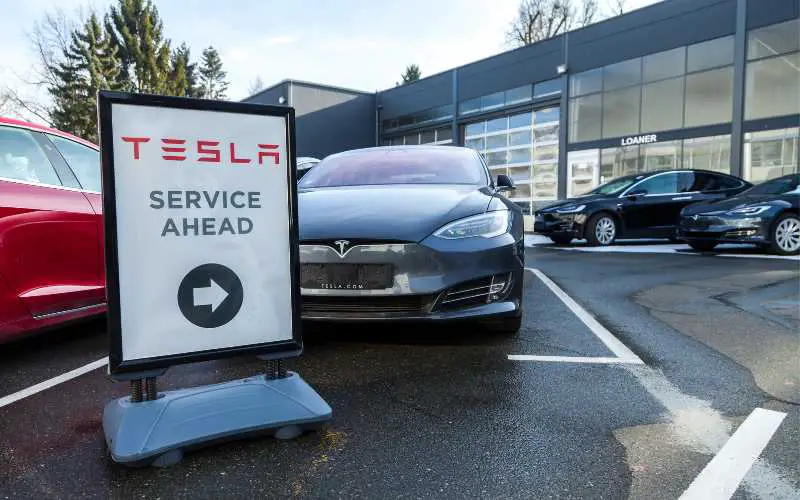
Tesla vehicles have some issues that are prevalent across their models. Many customers have continued to complain about these problems and the need to pay for their repairs.
The following are three of the most common repairs on Tesla vehicles.
#1. MCU Memory Decline
MCU stands for the media control unit. It is the display screen found in Tesla vehicles. This screen shows essential information about the car and its operation.
The screen displays information pulled from memory in its system. Tesla uses eMMc Flash memory to enable quick uploading and updating of information.
However, this continuous upload and update cycle causes the memory to fail. A failed memory renders the entire media control unit inoperable.
Therefore, the memory will need replacing or repairs.
#2. Body Repairs
There are reports of glass windows on Tesla models cracking. The glass is fragile, and users complain that they have to replace it frequently.
Also, the Tesla Model 3 door handle is reportedly bad. There are complaints of low-quality handles that are not durable.
The door handles on Model 3 are thinner and made with less durable materials than other top models.
Tesla designed these handles to make them pop out before you can open the door. However, sometimes the handle doesn’t pop out but clings to the door.
This situation causes users to try and pull out the handle, which can make it break off. When this happens, you won’t be able to get in your car without repairs.
#3. Battery Issues
Tesla batteries develop issues that are common among users. For example, these batteries can have limited range or stop functioning entirely in cold weather.
There are complaints about the batteries declining rapidly and having lower functioning capacity. Since the battery is the life force of the car, it will need repairing or replacement.
What is the Most Common Failure of Tesla?
Tesla models can have individual issues troubling them. However, some problems are consistent with particular models.
The following are some of the common failures of Tesla models.
#1. Model X
One common problem here is the autopilot system. Tesla users complained that the system malfunctions or stops working as the car ages.
An example of autopilot malfunctioning is phantom braking. The term ‘phantom braking’ describes an advanced self-driving system that brakes a car for no reason.
Naturally, these systems apply brakes when an object is in the car’s path. However, these reports claim the brakes applied when no object blocked the road.
There are also reports of users experiencing a ghosting phenomenon on the windshield. In this case, the windshield produces multiple reflections which transmit multiple images.
This phenomenon can confuse drivers on the roads and easily lead to accidents.
#2. Model Y
The Tesla Model Y has issues like wrong wheel alignment. Users have pointed out how they needed to realign their wheels at independent car centers.
The wheel’s misalignment veers and sways the car. The car also develops noises once you hit high speeds. Other issues include tire pressure loss and damaged seat belt pre-tensioner.
#3. Model 3
An inoperable touchscreen system is the failure commonly attributed to the Tesla Model 3. The Media Control Unit (MCU) powers the touchscreen and its displays.
This MCU has numerous processors and memory chips. The memories have a preset write cycle, usually about 3,000 program-delete cycles.
The memories stop working once the cycle elapses and users experience touchscreen blackout.
Most times, this screen displays vital information necessary for safe driving conditions. It would be dangerous when the screen goes off when driving.
#4. Model S
Transmission issues are one of the common issues faced by users of Tesla Model S. Reports of grinding noises during acceleration are rampant.
The cause of this issue is a bad bearing. When the noises worsen, it hints at the total breakdown of the drive unit.
A worn-out cooling sealant will cause the drive unit to fail. When the seal wears out, coolant drips out, thereby damaging the motor and other electrical components.
These failures are notable among Model S variants with a huge rear drive system.
Which Tesla Has Least Problems?
The Tesla Model 3 is reportedly the most reliable of Tesla vehicles. However, reliability varies among individual Tesla vehicles.
A model Y could be out there that’s better than any other Tesla Model 3. Reliability depends on production and, eventually, maintenance.
Tesla Model 3
Some complaints about the Model 3 sedan include failures of internal security control systems. There are also reports of door-locking issues.
Nevertheless, the Model 3 received praise from Consumer Reports and got a Top 10 spot in their Car of the Year award.
They lauded Model 3’s safety, reliability, performance, and affordability. Furthermore, the Insurance Institute for Highway Safety awarded the 2021 Model 3 five stars in crash safety.
They also chose the Model 3 in their Top safety picks in 2021. These accreditations put Model 3 at the forefront of reliability among the Tesla models.
Does Tesla Usually Need a Lot of Repairs?
All vehicles need regular maintenance, and Tesla is no different. Maintenance helps keep the vehicle in top shape, so you don’t pay much for avoidable repairs.
Furthermore, Tesla cars don’t have as many moving components as vehicles that use combustion engines. The absence of fluids in Tesla means there are little to no leakages and no oil changes.
Also, there are no belts that can wear out or any spark plugs to pay attention to. Tesla recommended that users schedule periodic changes on certain items.
This practice greatly reduces the repair cost of Teslas.
The following are some maintenance requirements for Tesla vehicles.
#1. Replacing the Cabin Air Filter
Tesla advises users to replace this filter between twenty-four and thirty-six months. This practice is specific for High-efficiency particulate Air (HEPA) filters.
The 2021 Models X and S need air filter replacements every thirty-six months.
#2. Tire Rotation
Users must rotate their tires after traveling 6,250 miles. The tires also need rotation if there is a 2/32 inch or more difference in tread depth within the tires.
#3. Brake Fluid Trial
As a Tesla owner, you need to test your brake fluid after every 24 months. This test is to determine if the fluid needs replacing.
Also, Tesla’s brake pads don’t need replacement as much as the ones in regular vehicles. The brake pads in Tesla utilize regenerative braking to ease wear on the pads.
#4. Winter Care
It would be best to lubricate your car’s brake calipers yearly or after 12,500 miles. This practice is for those who live in cold regions.
#5. Air Conditioning Care
You must service the A/C and change the desiccant bag between two and six years. However, this service depends on the Tesla model you have.
The table below shows the timeframe for A/C servicing in various models.
| Tesla Model | A/C Service Interval |
|---|---|
| Model 3 | After six years |
| Model S (2012 – 2020) | After two years |
| Model Y | After four years |
| Model S | After three years |
| Model X (2021) | After three years |
| Model X (2012 – 2020) | After four years |
It’s important to perform these maintenance practices, so that car components don’t require frequent replacements.
However, regular maintenance doesn’t mean your Tesla won’t need repairs, as some parts will still break down.
The following are some repair charges for Tesla components.
| Repair | Charges |
|---|---|
| Replacing brake caliper | $357 – $593 |
| Replacing oxygen sensor | $271 – $444 |
| Changing the window motor controller | $592 – $851 |
| Replacing wheel bearings | $325 – $394 |
#6. Repair Benefits of Extended Warranty
Tesla’s batteries and drive unit have extended warranties of over eight years, which can be 100,000, 150,000, or 120,000 miles. The mileage varies across models.
The extended warranty covers Tesla parts against defects better than a regular warranty. This warranty is great for owners who wish to maintain their car’s shape over time.
Additionally, a lengthy warranty saves money against sudden repair costs.

Hey, I’m Michael Davis, a 35-year-old with a degree and a love for cars and tech. Since I was a kid, cars have been my thing—so much that I even thought they ran on magic beans! Fast forward, and I’ve built Vehicle Army, your one-stop-shop for easy-to-understand car facts.

